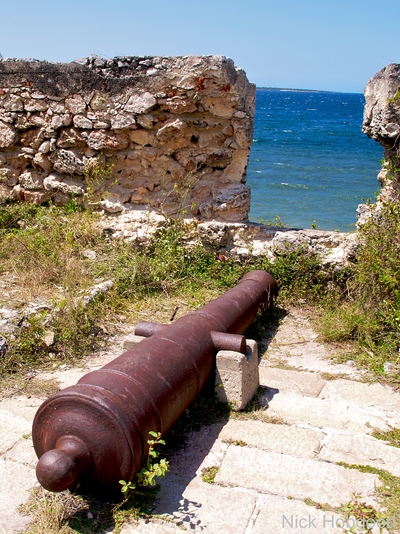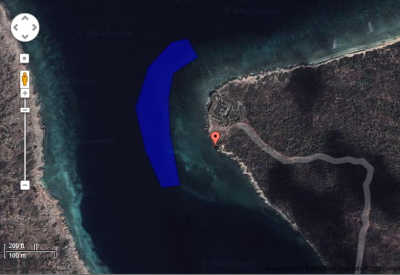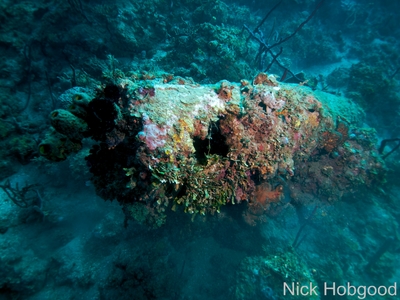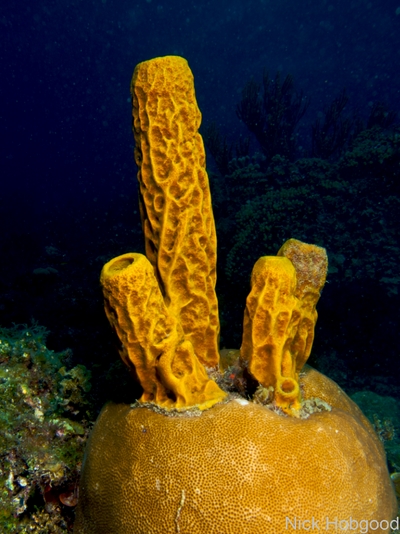Liberty Wall – One of Haiti’s Hidden Diver Havens and Extraordinary Dive Site
Aug 03
Photos and Article by Nick Hobgood
On the north coast of Haiti lies the town of Fort Liberté, located an hour’s drive east from Cap Haitien – a place filled with historical significance. The town was established in the days of Christopher Columbus when it was a trading town between the native Indians and the Spanish. It was known then as Bayaha. The neighboring town of Puerto Real was established in the early 1500’s in order to expand Spain’s empire in the region. Trade flourished and the Spanish brought goats and cattle to raise for food. With no predators or competition, they quickly flourished on native grasses.

Fort Saint Joseph
The Spanish, French and English were soon fighting for land in the Caribbean, and the famed Island of Tortuga, only a few miles to the West, was crawling with privateers looking to make fortunes in trade and piracy. The bay of Fort Liberty became the main production center of smoked meat or “viande bouccanee” in French. Viande bouccanee originated from the local name for the meat smoker the Indians used – “boukan”. Those who specialized in producing the meat for buyers on Tortuga Island became to be known as “bouccaniers” in French and “buccaneers” in English.

one of the cannons that overlooks the bay to protect the city from pirates and foreign ships
Liberty wall dive site is just East of the narrow entrance to the bay where a smaller fort – Fort Labouque – is located.

Google Maps of the dive site and entry point.
What appear to be several cannons can be found on the descent from the shore entry point. The cannon below surely has an interesting story to tell about how the hole was blown out of its back end and why it now lies at the bottom of Davy Jones’ Locker.

The dive site is just around the corner to the East. It is a wall ranging from 40 – 45 meters in depth. As you swim along the wall you can see all sorts of hard and soft corals, purple sea fans, barrel and vase sponges, and lots of other marine life including reef fish and the occasional pelagic mackerel and barracuda swimming by.

Magical purple fans are common to Liberty Wall
Unfortunately, Liberty Wall is a DIY dive site. There is only one dive operator in the North at Cormier Plage hotel near Cap Haitien. Their compressor does not always work but 2 years ago, plans were in motion to get it fixed or replaced. Unless you have your own tanks and compressor, it is imperative to check on the availability of tanks and fills before you get on the plane for Haiti. Once you have your tanks, you have to drive to Fort Liberté. From there either rent a fishing boat to go via the bay or drive around the bay on a dirt track which requires a 4×4 – so make sure you don’t get stuck in the mud holes.

Lots of colorful fish inhabit the northern reefs
If you can get all that lined up, Liberty Wall is worth the effort. Several dive professionals who have been diving the Caribbean for many years said on their visit to the site that it is one of the most spectacular walls they have dived yet.


These stove-pipe and vase sponges come in an array of bright colors from yellow to pink

This pair of shrimp set up a cleaning station on a big barrel sponge growing at the base of the wall
About the author:
Nick Hobgood learned to dive while in high school in Haiti and was lucky to go back on a 3 year work assignment from 2008 – 2011, based out of the North. Knowing that there were few dive operators in Haiti, he brought 4 tanks and a portable compressor with him. He is an avid underwater photographer and has donated all of the proceeds from his first book “Haiti from Below” to ReefCheck to promote marine conservation in Haiti. A copy of the book can be purchased on the ReefCheck website here:
http://reefcheck.org/store/detail.php?pid=578&cid=5





Related Articles
Popular Articles